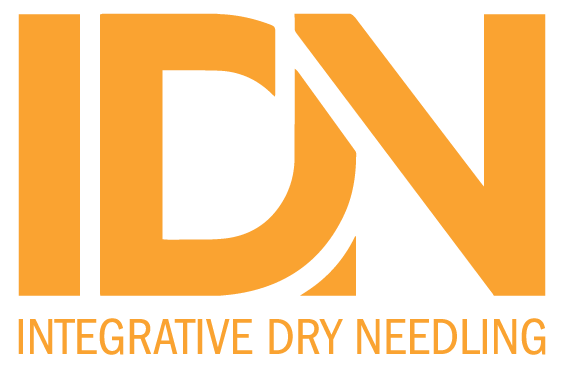Autologous Growth Factor Injections in Chronic Tendinopathy.
J Athl Train. 2014 May 19;
Authors: Sandrey MA
Abstract
Reference : de Vos RJ, van Veldhoven PLJ, Moen MH, Weir A, Tol JL. Autologous growth factor injections in chronic tendinopathy: a systematic review. Br Med Bull. 2010;95:63-77. Clinical Question : The authors of this systematic review evaluated the literature to critically consider the effects of growth factors delivered through autologous whole-blood and platelet-rich-plasma (PRP) injections in managing wrist flexor and extensor tendinopathies, plantar fasciopathy, and patellar tendinopathy. The primary question was, according to the published literature, is there sufficient evidence to support the use of growth factors delivered through autologous whole-blood and PRP injections for chronic tendinopathy? Data Sources : The authors performed a comprehensive, systematic literature search in October 2009 using PubMed, MEDLINE, EMBASE, CINAHL, and the Cochrane library without time limits. The following key words were used in different combinations: tendinopathy, tendinosis, tendinitis, tendons, tennis elbow, plantar fasciitis, platelet rich plasma, platelet transfusion, and autologous blood or injection. The search was limited to human studies in English. All bibliographies from the initial literature search were also viewed to identify additional relevant studies. Study Selection : Studies were eligible based on the following criteria: (1) Articles were suitable (inclusion criteria) if the participants had been clinically diagnosed as having chronic tendinopathy; (2) the design had to be a prospective clinical study, randomized controlled trial, nonrandomized clinical trial, or prospective case series; (3) a well-described intervention in the form of a growth factor injection with either PRP or autologous whole blood was used; and (4) the outcome was reported in terms of pain or function (or both). Data Extraction : All titles and abstracts were assessed by 2 researchers, and all relevant articles were obtained. Two researchers independently read the full text of each article to determine if it met the inclusion criteria. If opinions differed on suitability, a third reviewer was consulted to reach consensus. The data extracted included number of participants, study design, inclusion criteria, intervention, control group, primary outcome measures (pain using a visual analog or ordinal scale or function), time of follow up, and outcomes for intervention and control group (percentage improvement) using a standardized data-extraction form. Function was evaluated in 9 of the 11 studies using (1) the Nirschl scale (elbow function) or the modified Mayo score for wrist flexors and extensors, (2) the Victorian Institute of Sports Assessment-Patella score, a validated outcome measure for patellar tendinopathy, or the Tegner score for patellar tendinopathy, and (3) the rearfoot score from the American Orthopaedic Foot and Ankle Scale for plantar fasciopathy. The Physiotherapy Evidence Database (PEDro) scale contains 11 items; items 2-11 receive 1 point each for a yes response. Reliability is sufficient (0.68) for the PEDro scale to be used to assess physiotherapy trials. A score of 6 or higher on the PEDro scale is considered a high-quality study; below 6 is considered a low-quality study. The PEDro score results determined the quality of the randomized controlled trial (RCT), nonrandomized clinical trial, or prospective case series (≥6 or <6). A qualitative analysis was used with 5 levels of evidence (strong, moderate, limited, conflicting, or no evidence) to determine recommendations for the use of the intervention. The number of high-quality or low-quality RCT or nonrandomized clinical trial studies with consistent or inconsistent results determined the level of evidence (1-5). Main Results : Using the specific search criteria, the authors identified 418 potential sources. After screening of the title or abstract (or both), they excluded 405 sources, which left 13 studies. After viewing the full text, they excluded 2 additional sources (a case report and a study in which the outcome measure was remission of symptoms and not pain or function), leaving 11 studies for analysis. Six of the 11 studies were characterized by an observational, noncontrolled design; the remaining 5 studies were controlled clinical trials, 2 of which had proper randomization. The mean number of participants included in the studies was 40.5 (range = 20 to 100). Three of the studies were on "tennis elbow," 1 on "golfer's elbow," 1 on wrist extensor or flexor tendinopathy, 3 on plantar fasciopathy, and 3 on chronic patellar tendinopathy. Based on the information reported, there was no standardization of frequency or method of growth factor injection treatment or of preparation of the volume, and an optimal mixture was not described. Autologous whole-blood injections were used in 8 studies; in 5 studies, the autologous whole-blood injection was combined with a local anesthetic. In contrast, a local anesthetic was used in only 1 of the 3 PRP injection studies. The authors of the other 2 studies did not report whether a local anesthetic was used. The number of autologous whole-blood and PRP injections varied, ranging from 1 to 3. The centrifuging process was single or double for the PRP injections. In 2 studies, calcium was added to activate the platelets. A visual analogue or ordinal pain scale was used in 10 of the 11 studies. Function was evaluated in 9 of the 11 studies using (1) the Nirschl scale in 4 elbow studies or the modified Mayo score at baseline in 1 elbow study, (2) the Victorian Institute of Sports Assessment-Patella score for 1 study and the Tegner score for 2 of the patellar tendinopathy studies, and (3) the rearfoot score of the American Orthopaedic Foot and Ankle Scale for 1 plantar fasciopathy study. Only 1 study used an appropriate, disease-specific, validated tendinopathy measure (Victorian Institute of Sports Assessment-Patella). All intervention groups reported a significant improvement in pain or function score (or both), with a mean improvement of 66% over a mean follow up of 9.4 months. The control groups in these studies also showed a mean improvement of 57%. None of the pain benefits among the intervention groups were greater than those for the control group at final follow up. In 4 of the studies, the control group and the autologous growth factor injection group had similar results in pain or function or both, whereas in 2 studies, the control group had greater relief in pain than the injection group. Eleven studies were assessed using the PEDro scale. The PEDro scores for these studies ranged from 1 to 7, with an average score of 3.4. Only 3 studies had PEDro scores of ≥6 and were considered high quality. The 3 high-quality plantar fasciopathy studies used autologous growth factor injections but did not show a significant improvement over the control group. One of the studies that showed no beneficial effect for the autologous growth factor injections was compared with corticosteroids. Compared with other treatments, level 1 (strong) evidence demonstrated that autologous growth factor injections did not improve pain or function in plantar fasciopathy. The PRP injection results were based on 3 low-quality studies, 2 for the patellar tendon and 1 for the wrist flexors-extensors; level 3 (limited) evidence suggests that PRP injections improve pain or function. Conclusions : Strong evidence indicates that autologous growth factor injections do not improve plantar fasciopathy pain or function when combined with anesthetic agents or when compared with corticosteroid injections, dry needling, or exercise therapy treatments. Furthermore, limited evidence suggests that PRP injections are beneficial. Except for 2 high-quality RCT studies, the rest were methodologically flawed. Additional studies should be conducted using proper control groups, randomization, blinding, and validated disability outcome measures for pain and function. Until then, the results remain speculative because autologous whole-blood and PRP injection treatments are not standardized.
PMID: 24840581 [PubMed – as supplied by publisher]



